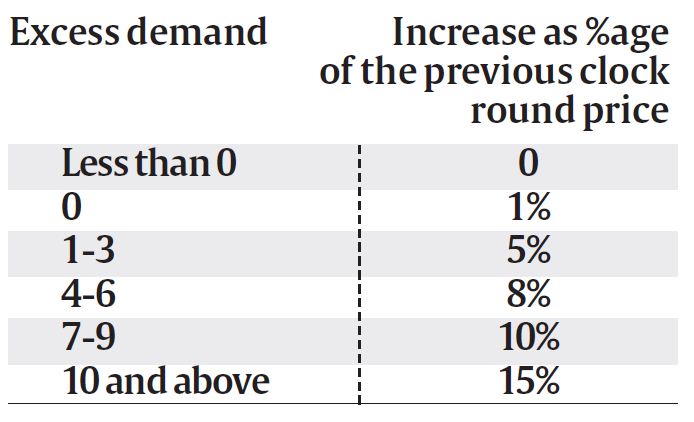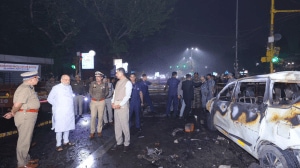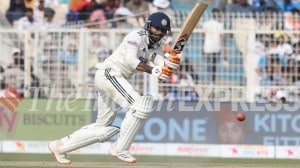The ongoing FM auctions and the ‘pressures’ the PM faced
How is the new bidding process different from earlier occasions? What concerns were raised by the bidders?
 The first batch of the third phase, for which auctioning is under way, involves allocation of 135 channels across 69 cities.
The first batch of the third phase, for which auctioning is under way, involves allocation of 135 channels across 69 cities.
Prime Minister Narendra Modi, in his address to the nation on Independence Day, said there was a lot of “pressure” on him and his government from “big people” to not hold the Phase III auctions for FM radio for private players. The first batch of the third phase, for which auctioning is under way, involves allocation of 135 channels across 69 cities, including lucrative territories such as Delhi, Mumbai and Bengaluru, as well as some not-so-lucrative markets such as Asansol and Akola. Here is how the process has progressed so far.
What is different about the bidding process this time?
Unlike Phase I and II of the auctions, where sealed bids were invited and the frequencies were allocated to the highest bidder, this time the government has followed a multi-layered auction process conducted over the Internet. This, the government maintained, would ensure transparency, and also allow the discovery of the “real price” through competitive bidding. The eligibility criteria, however, was the same as in the previous phases, i.e., only companies registered in India, in which at least 51% of the equity was held by the largest Indian shareholder, were allowed to participate.
[related-post]
How was the auction process structured?
After applying in a prescribed format, prospective bidders were required to deposit earnest money in the form of a bank guarantee, which was 25% of the reserve price of that city per channel. The applicants were allocated eligibility points based on their application and the earnest money they deposited. The higher the deposit, the more the points. Likewise, each channel in each city had eligibility points based on the reserve price. The bidders traded their eligibility points to bid for channels.
After screening the applications, the government shortlisted 21 bidders. Later, Digital Radio Broadcasting Ltd, owned by Kalanithi Maran’s Sun Group, also appeared in the picture after the Delhi High Court directed the government to allow it to participate in the bidding process. The government had disallowed Digital Radio Broadcasting in the wake of the denial of security clearance to its parent by the Ministry of Home Affairs.
After this began the e-auction process, that comprised two stages. In the first stage, bidders were required to bid for the number of channels without linkage to any frequency. The bidding consisted of a number of clock rounds that stopped only when either the winner emerged or the bidding was nil. In the first clock round, the price for each FM channel in a city was equal to the reserve price set by the government. For subsequent rounds, the price was linked to excess demand, which was calculated as the difference between the number of bids received and the number of channels up for grabs in a particular territory. The following formula was used to determine the incremental increase in the clock round or the bidding price:
To understand how this worked, take the example of Delhi. Being the most lucrative city, the prospective bidders had predicted the only frequency on offer in Delhi would be bitterly fought and that might push its floor price of Rs 34 crore up by almost 100%. But the final bid for the lone channel went up by 400% to Rs 170 crore, because right at the beginning, there were five bidders for the channel, thus creating an excess demand of four. This pushed the price up by 8% in the first round itself. This remained the case for many subsequent rounds, and the winner emerged only on day 15, after the 60th round of bidding.
What were the issues raised by the prospective bidders before the bidding began? What were the “pressure” points that the PM referred to in his speech?
The first argument of the prospective bidders was that FM radio is a medium for the masses with limited scope for monetisation, which the government must consider while laying down the bidding process. The government, however, did not budge, and the operators’ fear that excess demand and limited supply in lucrative territories could push up prices appears to have come true in the case of Delhi. The bidders also asked the government to remove the 1% increase in the clock round, in which the number of bidders equalled the number of frequencies. The large operators also asked the government that they be given preference in selecting frequencies of their choice. Some operators asked the government to free up more frequencies, and do away with the condition that no entity shall be allowed to own more than 15% of all channels allotted in the country. There was also a request for clarity on the status of Sun Group. The fear among the bidders was that in case the Sun Group was not given security clearance and hence, had to surrender its licences, the operators would have to go through the bidding process all over again.
The government did not oblige the operators on any of these issues. It has, so far, mopped up revenues in excess of Rs 1,000 crore, which is way beyond its own expectations. The only sore point for the government so far has been that there haven’t been any takers for the smaller towns.





- 01
- 02
- 03
- 04
- 05


































